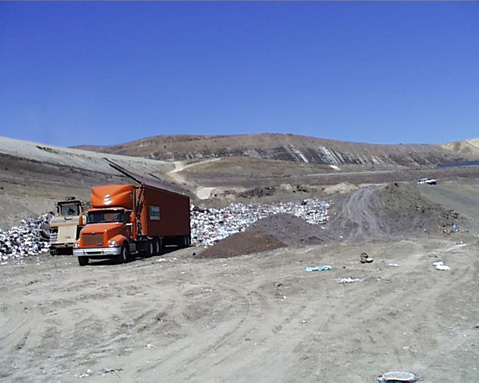City Considers Major Tajiguas Landfill Deal, Warts and All
Final Vote on 20-Year, $9-Million-a-Year Contract Set for Tuesday

Given little choice and no real alternatives, the Santa Barbara City Council is poised to hold its nose and jump on board the $122 million project to extend the life of the Tajiguas Landfill before it reaches maximum capacity.
“I don’t know how to get out of this box,” said Councilmember Gregg Hart last Tuesday about what he called the “unacceptable” reality of relying on a dump sited in a canyon along the otherwise unspoiled Gaviota Coast. “But I’m not seeing a clear path to better solution today,” he said. “I see it in the future, but not today.”
For the county, which owns and operates the landfill, to proceed with its Tajiguas Resource Recovery Project (RRP) it needs a 20-year, $9-million-a-year commitment from the city in the form of 75,000 tons of trash delivered annually. That represents around 40 percent of the waste that would flow through the proposed facility, designed to sort out salable recyclables and convert green waste into biogas and electricity. The rest will come from Goleta, Buellton, and the unincorporated parts of the county. City staff has estimated the RRP will keep as much as 65 percent of Santa Barbara’s trash from being packed into the landfill. Right now, 39 percent is diverted.
To cover the cost of the RRP’s construction and ongoing operations, tipping fees would jump from $87/ton to $120/ton by 2019. The difference would be paid in part by city residents and 14.6 percent increases in their trash bills. For the average single-family home, that translates to an increase from $36.25/month to $41.54/month. Apartment and condo complexes with small- to medium-sized dumpsters would see rates go from $365.99/month to $419.42/month.
The RRP has wound its way through a lengthy and tortured approval process, with no fewer than 140 hearings over the last decade and sustained pushback from environmentalists. Earlier this year, the Community Environmental Council argued that the county’s plan will cost around $50 million more than it should and was put in the hands of an untested developer who failed to obtain the private financing it promised. The developer — MSB Investors LLC, formerly Mustang Renewable Power Ventures LLC — has since secured public financing in the form of construction, payment, and performance bonds.
Last Tuesday, attorney Marc Chytilo, speaking on behalf of the Gaviota Coast Conservancy, reminded the council that in 1999 the County Board of Supervisors voted unanimously to find some place else in the next 15 years to dump Santa Barbara’s waste. He lamented that didn’t happen and that alternative sites and technologies were not more thoroughly studied. Chytilo suggested the city not simply concentrate on prolonging the landfill’s lifespan. “It’s time to look beyond Tajiguas,” he said.
Chytilo also questioned the wisdom of relying so heavily on the volatile recyclables market as the RRP’s financial backbone. City planners have stated that revenues from the sale of recyclable commodities — as well as electricity — will cover all but $2.89 million of the annual cost to operate the facility. Chytilo pointed out that the recyclables market has been “tanking” for a number of years. “And you may have heard about this fellow, Donald Trump, who doesn’t want us doing business with China in the future,” he went on. “China is is our principal partner for these sales.”
Last, Chytilo doubted promises that compost created by the RRP’s digestor will be eagerly purchased by area farmers. “What we’ve been hearing from farmers is, ‘No way,’” said Chytilo. “They’ll make their own compost before putting trash-derived compost on their land.”
City planner Matt Fore provided the council with a very different assessment. He talked about how a digestor and materials sifter used up in Gilroy — the very same machines that will be used here in Santa Barbara — have produced healthy compost that Bay Area farmers are regularly buying as fertilizer and mulch. Fore acknowledged the recyclables market can be unpredictable, but said overall in the last 20 years it’s been a consistent moneymaker for the city.
Fore assured the council the RRP doesn’t pose any greater financial risk than other major capital projects the city has invested in, and he discussed the several types of insurance the facility has secured. Fore also listed the project’s benefits — diverting much more waste, complying with new state mandates, generating 1 megawatt of power, etc. — and said his staff took comfort in a variety of performance standards MSB Investors must comply with or incur heavy penalties.
Hart, echoing the sentiments of a few fellow councilmembers, indicated he would vote to approve the city’s contract with the county at their meeting next Tuesday. But he and others weren’t 100 percent happy about it. “It’s sort of like buying a computer,” he said of evolving technologies and worries that the RRP, so many years in the making, will no longer be cutting edge by the time it’s built. “You can always wait until next year to buy a better computer for less money, but you need a computer today,” he said. “And we need to fix this problem today.”



